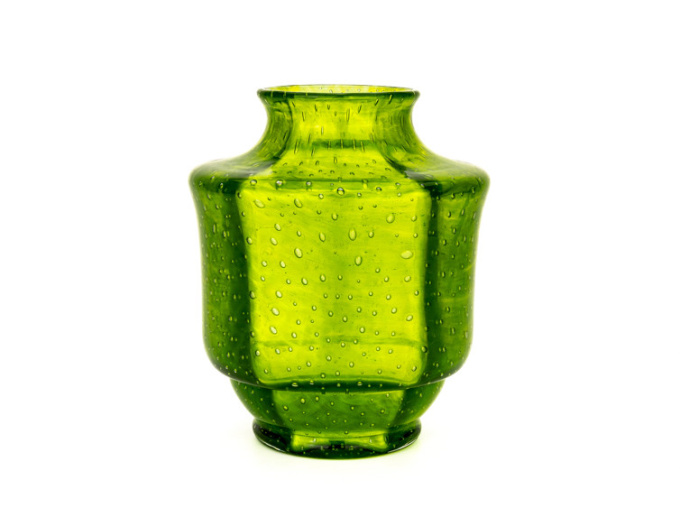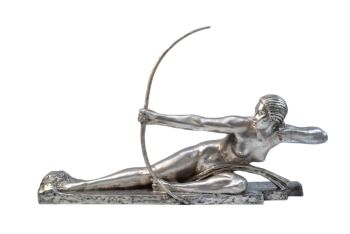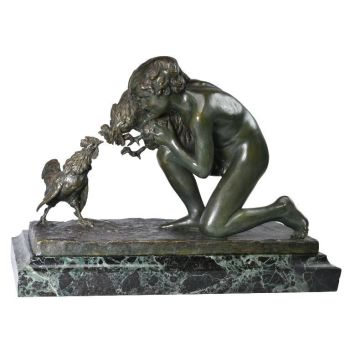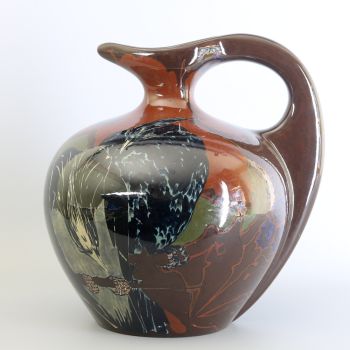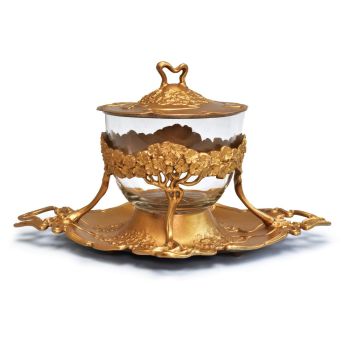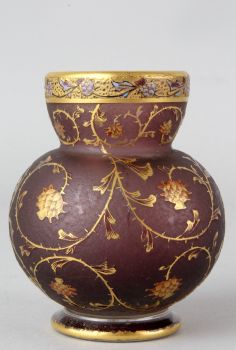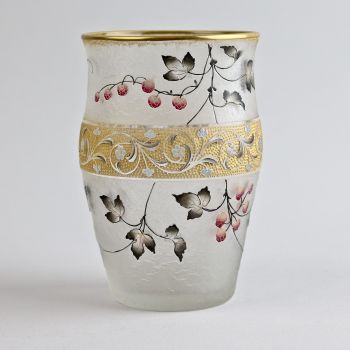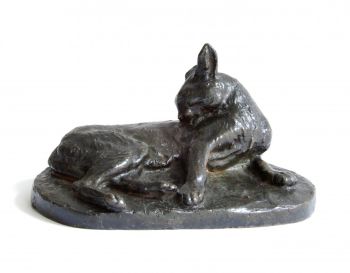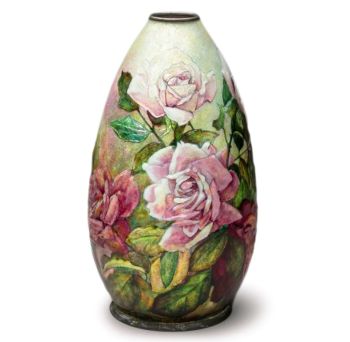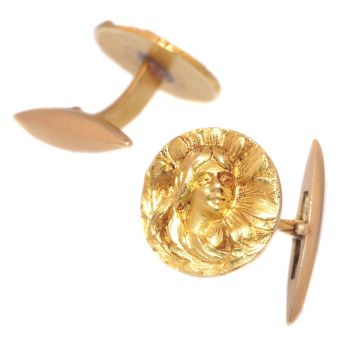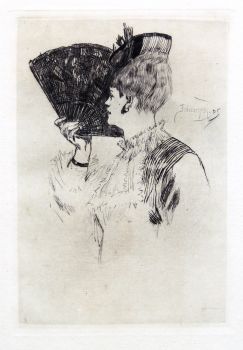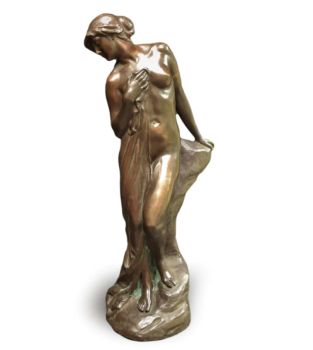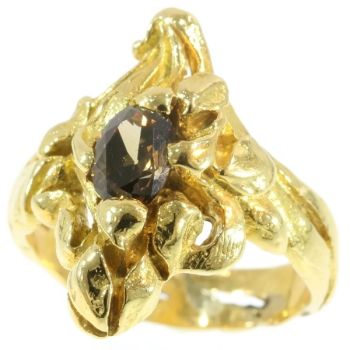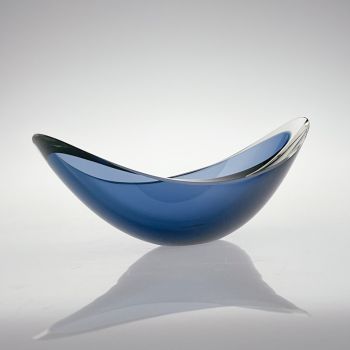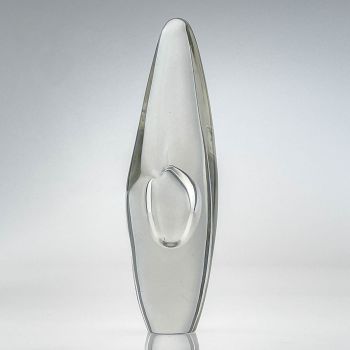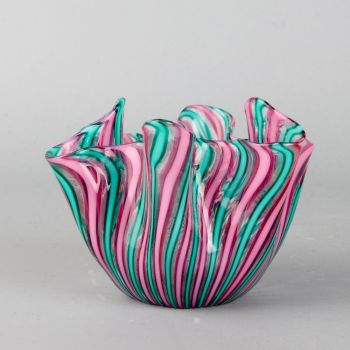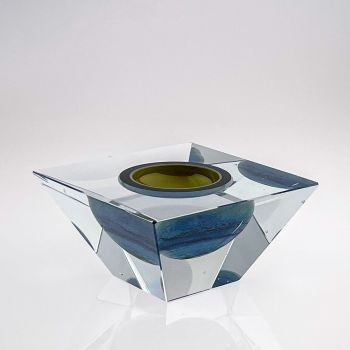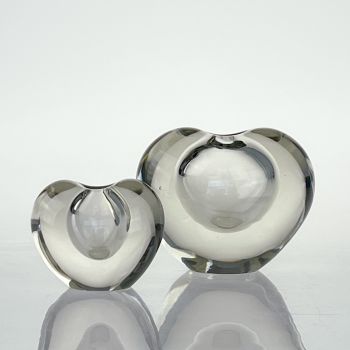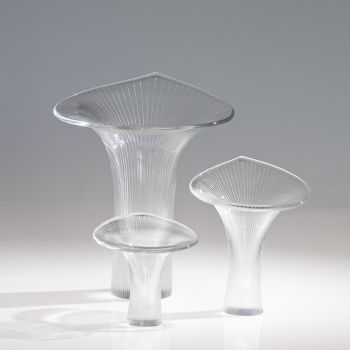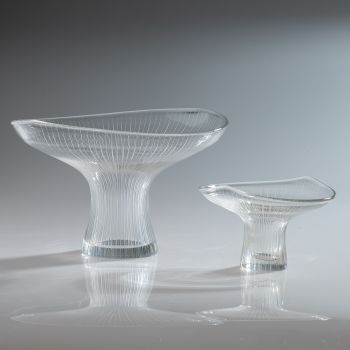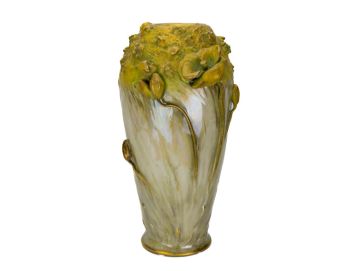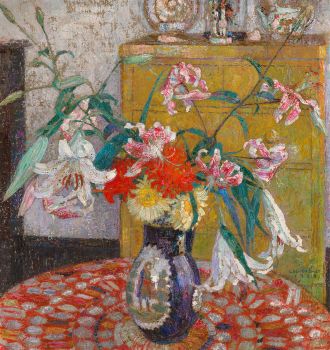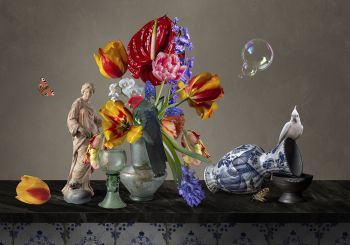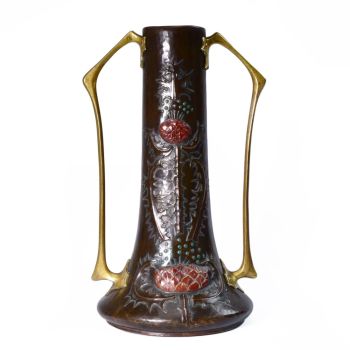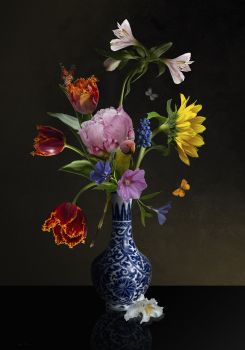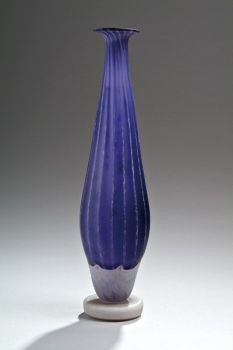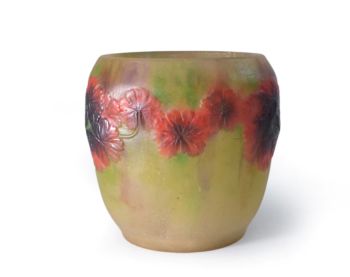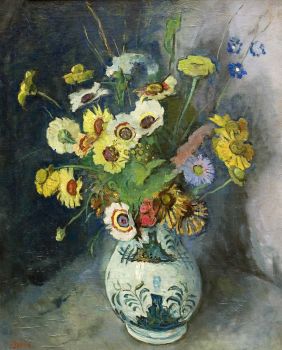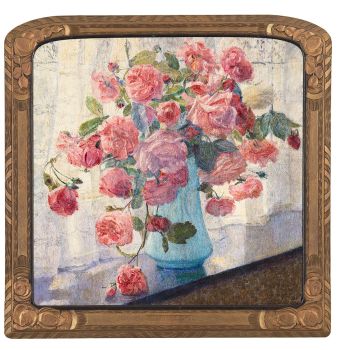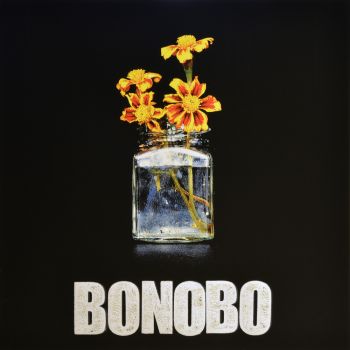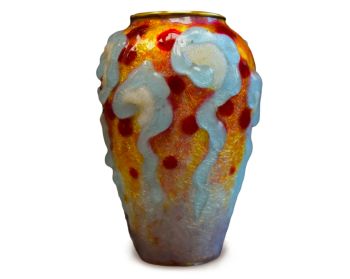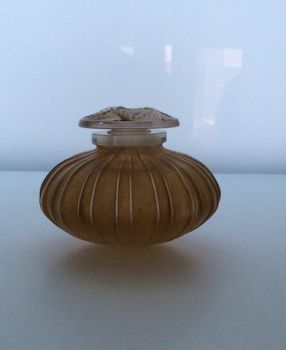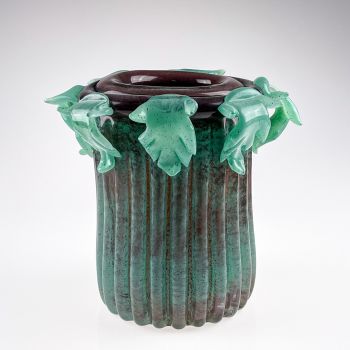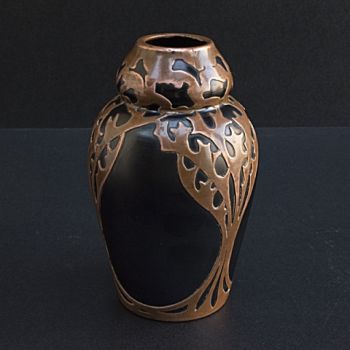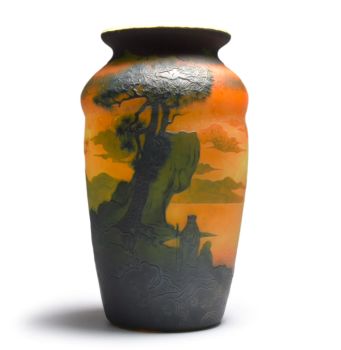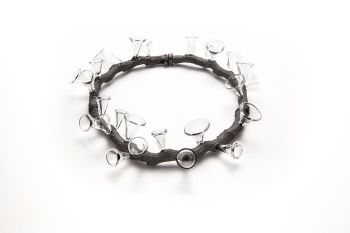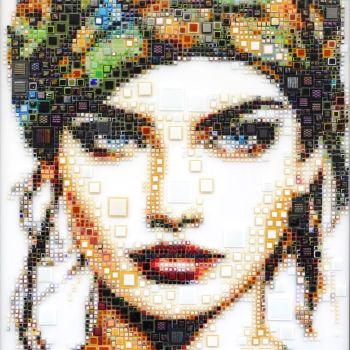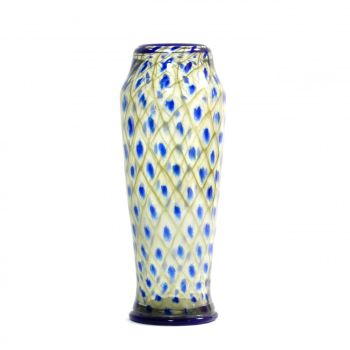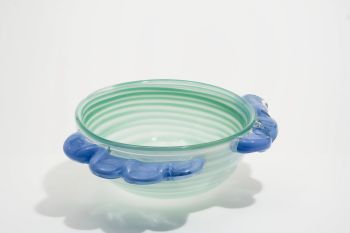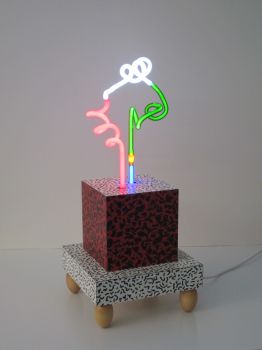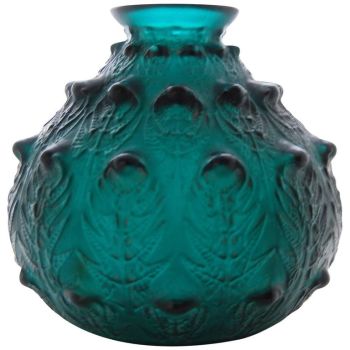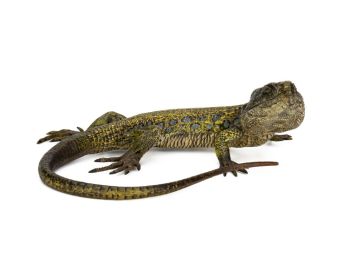Johann Loetz Witwe – Ausführung 140 – “Controlled air bubbles” in ground color Green 1900 - 1909
Johann Loetz (Lötz) Witwe Klostermühle
Verre
14 cm, ø 12 cm
ConditionExcellent
Prix sur demande
Antiques Emporium
- Sur l'oeuvre d'artThis masterpiece by Johann Loetz Witwe executed in Ausführung 140 is a true testament to the artistry and innovation of the Jugendstil era.
Adorned in a captivating ground color of verdant green, this vase exudes a sense of natural splendor that is both captivating and evocative. However, its true beauty lies in the intricate layers of glasswork that adorn its surface, each telling a story of craftsmanship and creativity.
At its core, the vase boasts an inner layer of titania glass threads, delicately woven to create a mesmerizing interplay of light and texture. These threads dance within the glass, casting enchanting shadows and lending an ethereal quality to the piece. Surrounding them is a layer of controlled air bubbles, suspended in a delicate dance that adds depth and intrigue to the vase’s design.
Finally, the outer layer of green glass encases this symphony of elements, providing a glossy finish that enhances the vase’s luminous presence. With each glance, new details emerge, inviting admiration and appreciation for the skill and artistry required to create such a masterpiece.
It’s important to note that while the accompanying pictures offer a glimpse into the vase’s beauty, they cannot fully capture the breathtaking colors and textures of the glass. The subtle nuances and iridescence of the glass can only be fully appreciated in person, adding to the allure and mystique of this remarkable piece.
Dimensions:
Height: 145mm / 5.71”
Diameter top: 65mm / 2.56”
Diameter body: 120mm / 4.72″
Literature:
Prestel – Böhmisch Glas 1880 – 1940 Band 1 Werkmonographie – Page 269. - Sur l'artiste
La verrerie Loetz a existé à Klostermuhle, en Autriche, pendant un peu plus de cent ans, à partir de 1840. Mais son apogée a eu lieu du vivant de Max Ritter Von Spaun, petit-fils du premier Johann Loetz qui avait fondé l'entreprise.
Von Spaun a repris l'entreprise en 1879 et l'a dirigée jusqu'en 1908, un an avant sa mort. Il est assisté d'Eduard Prochaska, son spécialiste technique, et ensemble ils inventent, conçoivent et produisent toute une série de merveilleux nouveaux types de verre, en déposant plusieurs brevets et en remportant des prix dans toutes les grandes expositions mondiales des années 1890 et des premières années de le nouveau siècle.
La société Loetz figurait parmi les leaders du design Art Nouveau et en particulier du verre d'art irisé. Le verre "Papillon", comme le vase de gauche, est parfois appelé aujourd'hui verre "à tache d'huile". Une autre coloration préférée de Loetz était le verre irisé avec des traînées tirées appelé verre « Phenomenon ».
Il y avait des vases irisés avec des rubans de couleurs métalliques enroulés sur la surface, et de nombreux motifs spectaculaires avec des traînées appliquées de belles couleurs, ou simplement retirés du corps du verre pour former des poignées ou une décoration.
Vers 1900, la société a commencé à collaborer avec des designers extérieurs et de grands artistes ont conçu des pièces pour Lotz, notamment Joseph Hofmann, Koloman Moser, Maria Kirchner et Hofstatter.
En 1908, Loetz a été repris par le fils de Max Von Spaun, également appelé Max, et bien qu'il ait connu des difficultés financières (faillite en 1911 et à nouveau en 1931), il y avait plusieurs grands designers dont le travail a été produit par Loetz au cours de ces années et à travers l'art période déco. Ceux-ci comprenaient Adolf Beckert et Michael Powolny.
Êtes-vous intéressé par l'achat de cette oeuvre?
Artwork details
Related artworks
Johann Loetz (Lötz) Witwe Klostermühle
Johann Loetz Witwe - Phänomen Genre 7773 – Orange1900 - 1910
Prix sur demandeAntiques Emporium
Johann Loetz (Lötz) Witwe Klostermühle
Johann Loetz Witwe – Jugendstil Cobalt Papillon vaas1900 - 1910
Prix sur demandeAntiques Emporium
1 - 4 / 7- 1 - 4 / 24
- 1 - 4 / 24
- 1 - 4 / 24
René Lalique
Un très rare vase «Fougères» vert foncé conçu par R. Lalique1912
€ 8.950Lennart Booij Fine Art and Rare Items
 Sélectionné par
Sélectionné parSilla Scheepens
Frères Daum
Daum Nancy – “Paysage Soleil Couchant” vase with two applied handles1900 - 1910
Prix sur demandeAntiques Emporium
1 - 4 / 24Frères Daum
Daum Nancy – “Paysage Soleil Couchant” vase with two applied handles1900 - 1910
Prix sur demandeAntiques Emporium
Gabriel Argy-Rousseau
Gabriël Argy-Rousseau – Crabes et Algues vase – 19201920 - 1929
Prix sur demandeAntiques Emporium
Amalric Walter
Amalric Walter & Henri Bergé – Crabe plumier1920 - 1929
Prix sur demandeAntiques Emporium
1 - 4 / 12

